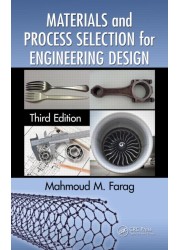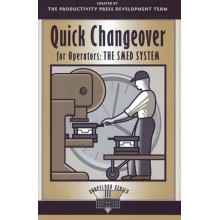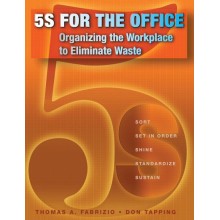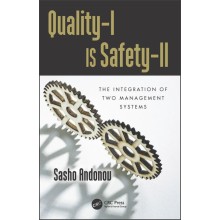Materials and Process Selection for Engineering Design
Quantity:
-
Add to Compare
Introducing a new engineering product or changing an existing model involves making designs, reaching economic decisions, selecting materials, choosing manufacturing processes, and assessing its environmental impact. These activities are interdependent and should not be performed in isolation from each other. This is because the materials and processes used in making the product can have a large influence on its design, cost, and performance in service.
Since the publication of the second edition of this book, changes have occurred in the fields of materials and manufacturing. Industries now place more emphasis on manufacturing products and goods locally, rather than outsourcing. Nanostructured and smart materials appear more frequently in products, composites are used in designing essential parts of civilian airliners, and biodegradable materials are increasingly used instead of traditional plastics. More emphasis is now placed on how products affect the environment, and society is willing to accept more expensive but eco-friendly goods. In addition, there has been a change in the emphasis and the way the subjects of materials and manufacturing are taught within a variety of curricula and courses in higher education.
Table of Contents
Product Design and Development in the Industrial Enterprise
Introduction
Feasibility Study, Identification of Needs, and Concept Selection
System-Level Design
Detail Design and Selection of Materials and Processes
Testing and Refinement
Launching the Product
Selling the Product
Planning for Retirement of the Product and Environmental Considerations
Product Market Cycle
Summary
Review Questions
Bibliography and Further Readings
Performance of Materials in Service
Failure under Mechanical Loading
Introduction
Types of Mechanical Failures
Fracture Toughness and Fracture Mechanics
Ductile and Brittle Fractures
Fatigue Failures
Elevated-Temperature Failures
Failure Analysis: Experimental Methods
Failure Analysis: Analytical Techniques
Failure Prevention at the Design Stage
Failure Mode Effect Analysis
Summary
Review Questions
Bibliography and Further Readings
Corrosion, Wear, and Degradation of Materials
Introduction
Electrochemical Principles of Metallic Corrosion
Types of Metallic Corrosion
Combined Action of Stress and Corrosion
Corrosion of Plastics and Ceramics
Oxidation of Materials
Corrosion Control
Wear Failures
Radiation Damage
Summary
Review Questions
Bibliography and Further Readings
Selection of Materials to Resist Failure
Introduction
Grouping and Identifying Engineering Materials
Selection of Materials for Static Strength
Selection of Materials for Stiffness
Selection of Materials for Fatigue Resistance
Selection of Materials for High-Temperature Resistance
Selection of Materials for Corrosion Resistance
Coatings for Protection against Corrosion
Selection of Materials for Wear Resistance
Wear-Resistant Coatings
Summary
Review Questions
Bibliography and Further Readings
R elationships between Design, Materials, and Manufacturing Processes
Nature of Engineering Design
Introduction
General Considerations in Engineering Design
Design for Six Sigma
Major Phases of Design
Environmentally Responsible Design
Design Codes and Standards
Effect of Component Geometry
Factor of Safety
Reliability of Components
Product Reliability and Safety
Product Liability
Summary
Review Questions
Bibliography and Further Readings
Effect of Material Properties on Design
Introduction
Designing for Static Strength
Designing for Stiffness
Designing with High-Strength, Low-Toughness Materials
Designing against Fatigue
Designing under High-Temperature Conditions
Designing for Hostile Environments
Designing with Specific Materials (Material-Specific Design Features)
Summary
Review Questions
Bibliography and Further Readings
Effect of Manufacturing Processes on Design
Introduction
Product Manufacture in the Industrial Enterprise
Classification of Manufacturing Processes
Selection of Manufacturing Processes
Design for Manufacture and Assembly
Design Considerations for Cast Components
Design Considerations for Molded Plastic Components
Design Considerations for Forged Components
Design Considerations for Powder Metallurgy Parts
Design of Sheet Metal Parts
Designs Involving Joining Processes
Designs Involving Heat Treatment
Designs Involving Machining Processes
Automation of Manufacturing Processes
Computer-Integrated Manufacturing
Summary
Review Questions
Bibliography and Further Readings
Selection and Substitution of Materials and Processes in Industry
Economics and Environmental Impact of Materials and Processes
Introduction
Elements of the Cost of Materials
Factors Affecting Material Prices
Comparison of Materials on Cost Basis
Value Analysis of Material Properties
Economics of Material Utilization
Economic Competition in the Materials Field
Processing Time
Processing Cost
Economics of Time-Saving Devices
CostBenefit and Cost-Effectiveness Analyses
Environmental Impact Assessment of Materials and Processes
Recyclability of Engineering Materials and Recycling Economics
Life Cycle Cost
Summary
Review Questions
Bibliography and Further Readings
Materials Selection Process
Introduction
Nature of the Selection Process
Analysis of the Material Performance Requirements and Creating Alternative Solutions
Initial Screening of Solutions
Comparing and Ranking Alternative Solutions
Selecting the Optimum Solution
Computer Assistance in Making Final Selection
Using MATLABR in Materials and Process Selection
Sources of Information for Materials Selection
Summary
Review Questions
Bibliography and Further Readings
Materials Substitution
Introduction
Materials Audit
Considerations in Materials Substitution
Screening of Substitution Alternatives
Comparing and Ranking of Alternative Substitutes
Reaching a Final Decision
Using MATLABR in Materials Substitution
Summary
Review Questions
Bibliography and Further Readings
Case Studies in Material Selection and Substitution
Introduction
Design and Selection of Materials for a Turnbuckle
Design and Selection of Materials for Surgical Implants
Design and Selection of Materials for Lubricated Journal Bearings
Analysis of the Requirements and Substitution of Materials for Tennis Rackets
Material Substitution in the Automotive Industry
Bibliography and Further Readings
Appendices
Appendix A: Metallic Materials—Classification, General Characteristics, and Properties
Appendix B: Polymers—Classification, General Characteristics, and Properties
Appendix C: Ceramic Materials—Classification, General Characteristics, and Properties
Appendix D: Composite Materials—Classification and Properties
Appendix E: Semiconductors and Advanced Materials
Appendix F: Conversion of Units and Hardness Values
Appendix G: Glossary
Index
Write a review
Your Name:Your Review: Note: HTML is not translated!
Rating: Bad Good
Enter the code in the box below:
Copyright © 2014 Engineering Standards Bureau. All Rights Reserved.
Developed By Zoom Into Web







